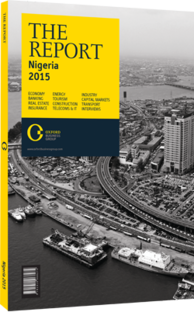Omobola Johnson, Minister of Communication Technology: Interview

Interview: Omobola Johnson
What strides have been made in improving telecoms operators’ ability to lay new infrastructure?
OMOBOLA JOHNSON: Between 2011 and 2014 over 30,000 km of terrestrial fibre was laid and over 10,000 2G and 3G base transceiver stations (BTS) were installed, bringing in 40m voice subscribers and 28m data subscribers. While this is a substantial addition to telecoms infrastructure, given increased demand for voice and data services, as well as more affordable access, we need to deploy this infrastructure faster and cheaper.
There are a number of things that constrain the pace and cost of roll-out, including the time it takes to procure right-of-way (RoW) for laying fibre-optic cable, obtain land and obtain regulatory approval from environmental authorities for BTS installation, as well as the associated costs of these processes. The federal government has helped to reduce the cost and time it takes to procure RoW on federal highways through collaboration between the Federal Ministry of Communication Technology and the Federal Ministry of Works, which has resulted in new RoW guidelines that grant operators unencumbered access to lay fibre-optic cable efficiently and cost-effectively. A similar collaboration with the Federal Ministry of Environment has resulted in the resolving of issues with environmental assessments for telecoms infrastructure.
At the state level the ministry has embarked on what we call the Smart State Initiative, which recognises the role of the states in deploying telecoms infrastructure and balances the need for states to generate internal revenue from local commercial operators. Smart states commit to developing effective measures to remove arbitrary charges and reduce state-imposed taxes and levies on telecoms infrastructure to the barest minimum, as well as significantly reduce RoW charges on state and local government roads. Telcos and infrastructure providers commit to installing infrastructure with minimum disruption to state roads and to providing passive infrastructure to state institutions that are within 1 km of the RoW. Through all of these initiatives we have been able to achieve cost reductions of between 50% and 80% in infrastructure deployment in participating states, and we are working to replicate this in all 36 states and the Federal Capital Territory.
How will infrastructure companies contribute to the expansion of fibre-optic networks?
JOHNSON: Today a large proportion of our telecoms infrastructure is concentrated not only in urban and commercial areas, but also duplicated or triplicated as each telco rolls out infrastructure to service their customers in more or less the same areas. The purpose of licensing new infrastructure companies, known locally as infracos, is to stimulate investments in a broadband network that is not only more widespread but also faster and more secure. The seven infracos, of which two have already been licensed to commence operations, will provide both inter-city and metropolitan fibre in geographically focused areas – i.e., Lagos and the six geopolitical zones – on a wholesale, non-discriminatory, open-access, price-regulated basis. Existing operators will have the option to transfer or lease their existing inter-city and metropolitan fibre infrastructure to the infracos or continue to operate on their own. We expect to issue licences for the remaining five regions by the end of 2015, and strongly believe this new approach to deploying inland, last-mile terrestrial fibre will contribute to meeting the broadband penetration targets set in the National Broadband Plan.
Will spectrum allocation continue going forward?
JOHNSON: A large proportion of Nigerians who access the internet do so on mobile devices, so spectrum allocation has to continue if we are to satisfy demand. A band in the 2.3-GHz spectrum was successfully auctioned in February 2014 for the provision of wholesale broadband services. The 2.6-GHz spectrum will be ready for auction in 2015, and we expect to licence the muchawaited digital dividend spectrum in 2015/16, once we can move all TV broadcasters to digital broadcasting.
You have reached the limit of premium articles you can view for free.
Choose from the options below to purchase print or digital editions of our Reports. You can also purchase a website subscription giving you unlimited access to all of our Reports online for 12 months.
If you have already purchased this Report or have a website subscription, please login to continue.

